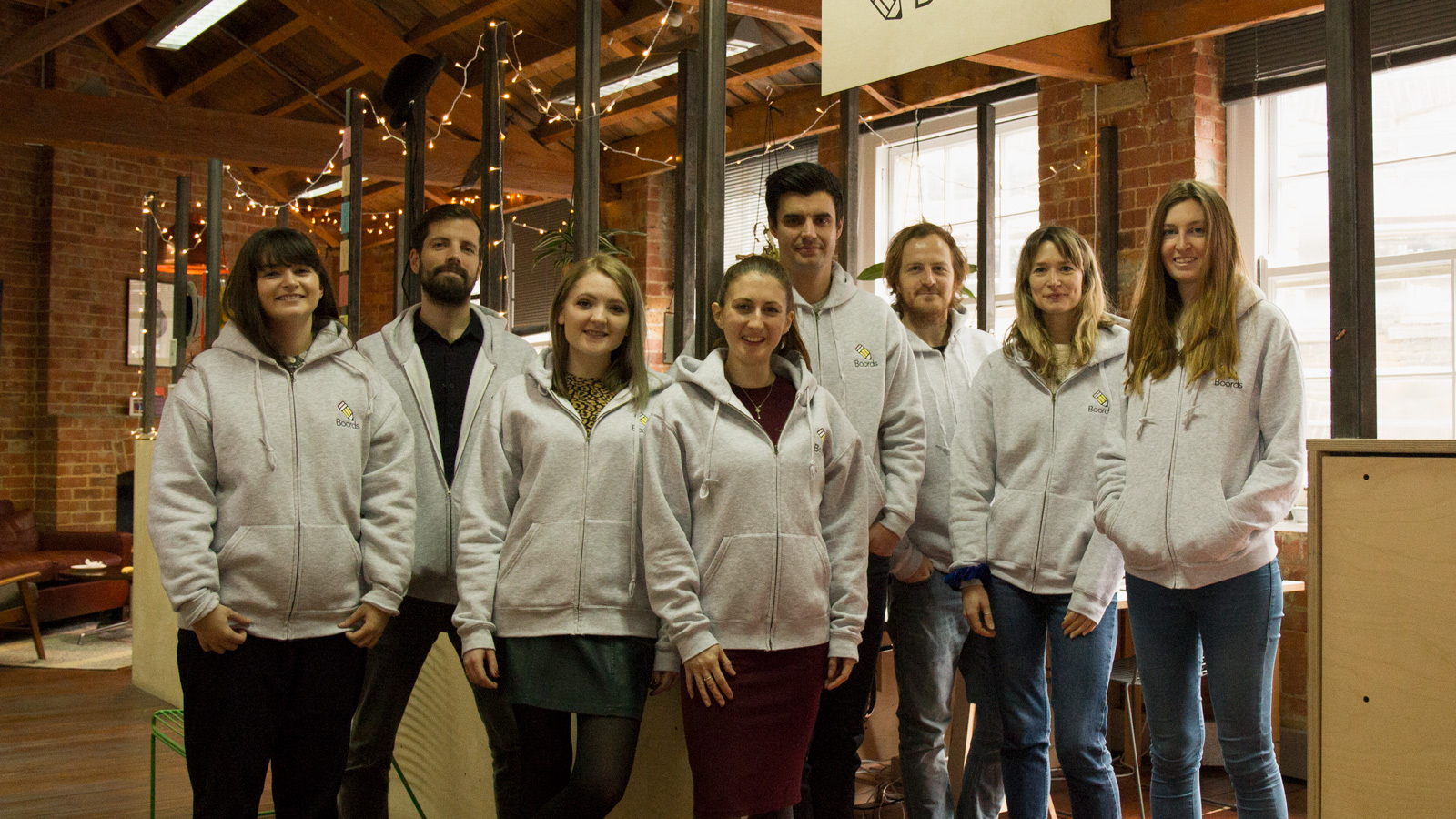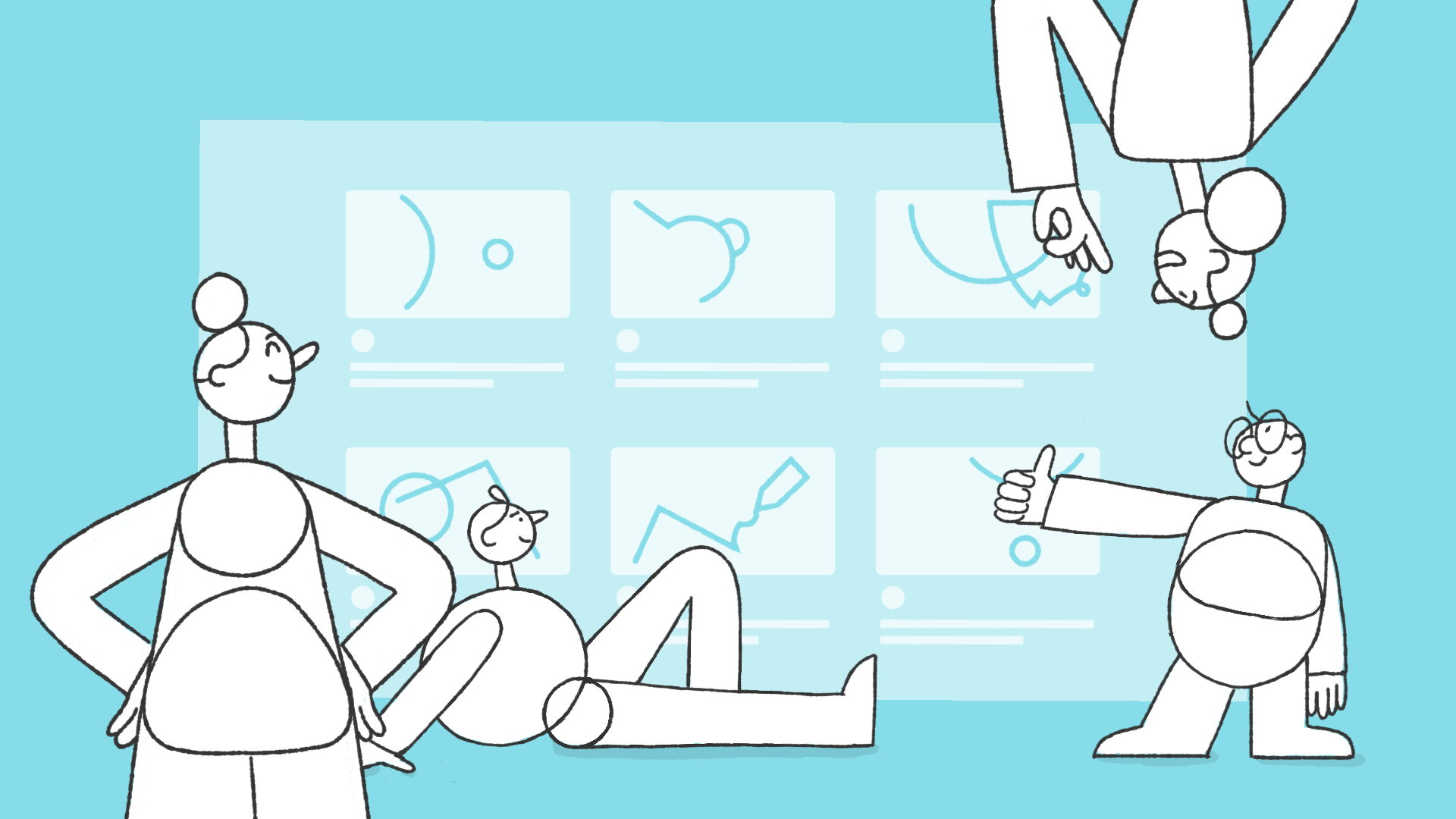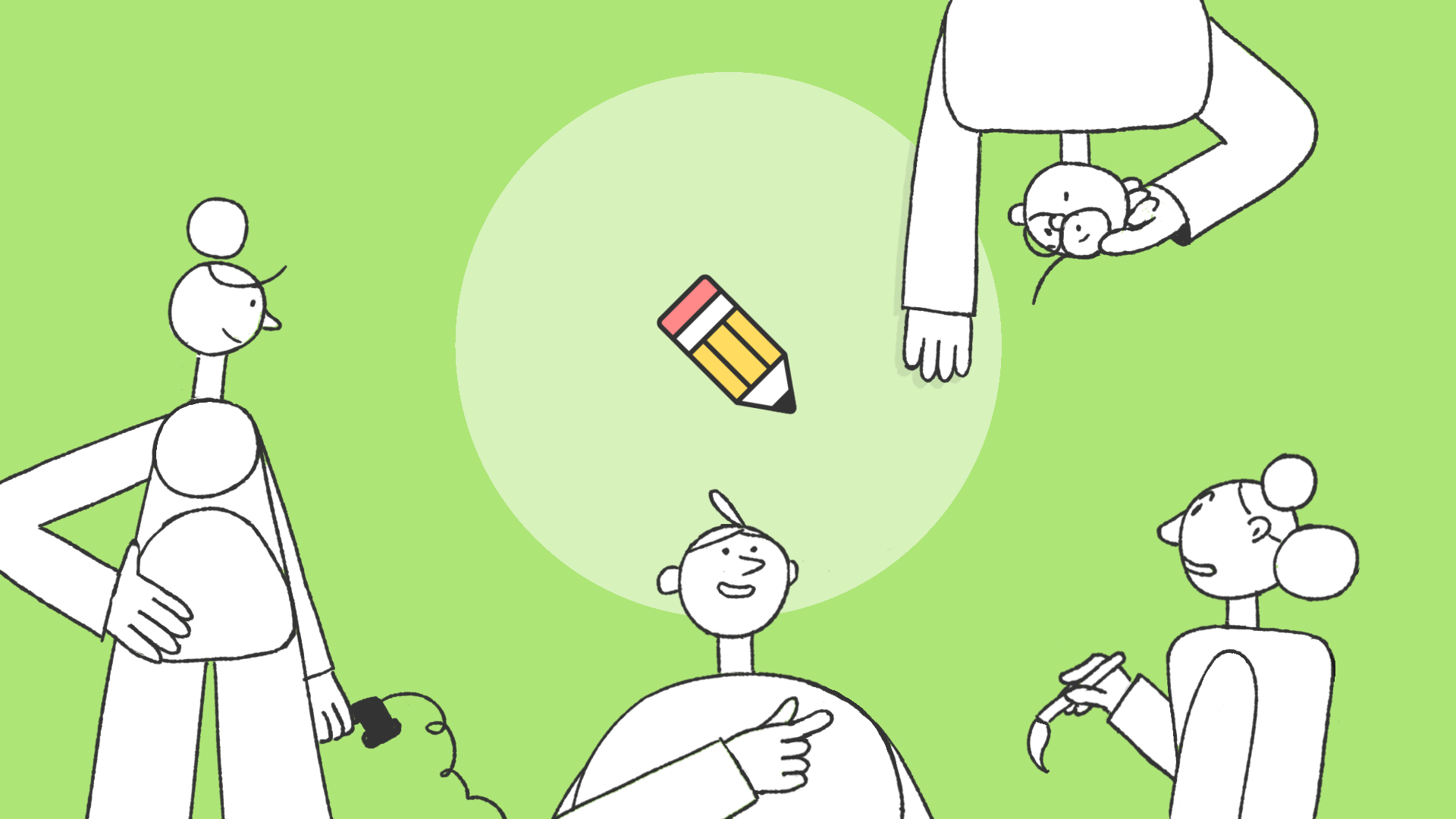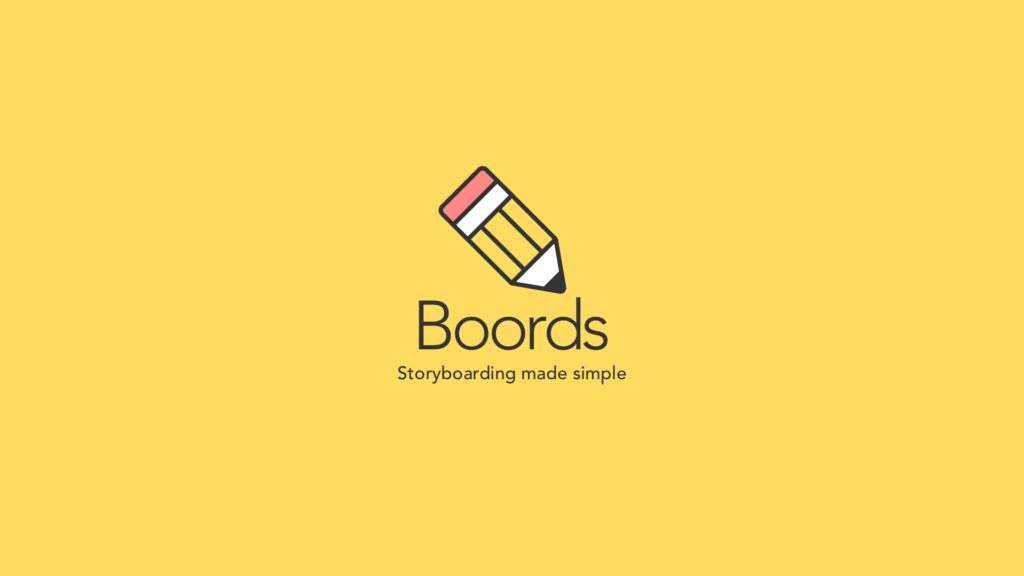Imagine that you made a beautiful cake. It’s two feet high, adorned with intricate icing patterns, and sprinkled meticulously with flakes of caramel. It took you quite a bit of time, but it looks fantastic.
Now you have to carefully carry that large, heavy cake from the kitchen, across the living room (watch out for the ottoman!), through the foyer, and place it gently on your dining table. Wow, nicely done! Hold on. You just found out that your guests can’t eat caramel, so you have to take it back through the gauntlet into your kitchen so that you can make the proper revisions to the cake
While it’s not a perfect metaphor, that experience is familiar to many of our illustrators who have run into similar issues during storyboarding for an animated promo video. They work hard to create a wonderful set of storyboards in Adobe and work laboriously to get the files into a specific, client-ready template…only to be asked to make adjustments to them and repeat the process again. This doesn’t even touch on the client-side of storyboarding troubles.
Given all the above, when Demo Duck first heard about Boords we knew we had to give it a shot. After using it on a few explainer video projects, we felt inspired to reach out to the people behind the curtain and learn more about how Boords came to be. Below is our recent interview with Boords Co-Founder James Chambers where he regaled us about how they got Boords up and running, why they felt like it would resonate with creatives, and what the next few years may look like. Shout out to the Boords team for providing the images and illustrations below too. Enjoy!

When did you realize that storyboarding was such a pain, and that in true explainer video fashion, there’s got to be a better way?
We had a big project come in that required at least a couple weeks worth of storyboarding. The system we used at the time worked fine. Well, until you needed to change something—then nobody knows what the latest version is! We thought that if we could make something quickly that could help with storyboarding, that would be great. We created a prototype and it saved us days of production time.

In undertaking the pivot to Boords, there must have been a lot of development, design, and various other efforts going on. How did you get connected with the right people to get Boords off the ground?
I put the program together, (Boords co-founder) Tom Judd gave input on the graphic design side, and our web designer weighed in on the UI and branding. It was an all hands on deck scenario.
Since the project was so small at the time, it was easy to carve out half a day here, half a day there, to actually make the thing. It becomes more challenging once you decide that you’re going to dedicate resources or weave it around client projects.
What were the early discussions like about taking Boords to market? How did you get the platform in front of people?
By using our contacts in the industry. We originally built Boords for ourselves, which is a double-edged sword. It’s easy to make something that is only useful to you. Having good relationships with the other local animation studios meant that we could reach out to them and get their input on what we should do too.

Once we made something that we were proud of, we pushed it out through the Animade channels. We’re lucky that there’s an audience overlap between potential Boords customers and people who follow Animade. We were fortunate to get in front of a large amount of people early on.
We also had a waiting list signup at the start, partly because we weren’t 100 percent convinced that the platform would hold up if we instantly had a large group of users on it. The waiting list might have helped generate buzz around Boords.
From the start, Boords has helped so many in the explainer video space. Was there a moment where you thought, “Holy smokes, this has legs!”
Honestly, the moment we felt that was the first time we used Boords. There was clearly a pain point there. What we didn’t know was how big the market was for it. It’s rewarding to know that we made people’s lives a bit easier, and that a drudge task is a little less challenging.
What did you learn from your now-defunct project FeedHop, and how did it inform your approach to Boords?
The biggest takeaway was to know what to do if things went well. It sounds a little trite, but I started FeedHop because I wanted it for myself. Suddenly, it’s costing money and time to run. I needed to think strategically. If this thing has legs, then what happens? Anything providing service ultimately involves some kind of investment on your end.
Soon after that experience, I started Boords. We knew that we weren’t just one day going to pull the plug and that we needed to have some financial plan of how we were going to maintain it long term. The last thing we wanted to do was to take it away.
We’re always evolving our approach to making animated video for business, which has led us to experiment with new ventures (RIP Healthy Films). We’ve wondered if they failed because we didn’t put enough resources into the projects. How did you allocate resources accordingly to Boords?
We try to put a lot of thrust into our side projects. We really believe in their value, so we set a schedule and we treat them like a client. They get a brief and a budget manager. We certainly take that approach with Boords. When we pull in Animade resources, we brief them, give them a deadline and tell them the deliverables. It’s not just, “oh, you have some time.” This is a project, this is what we’re putting into it, and off we go. We segment work that way, instead having it be an amorphous thing that never gets done.
When did you bring on people full-time for Boords? Was it planned ahead or reactionary?
We’ve never taken any outside funding, and it’s key that we didn’t and don’t do that. We reached a point where expenses were covered and we could bring people on. So now we have two people working on Boords full-time. At first, we probably didn’t anticipate the level of extra work that running two businesses would bring because you have all of the admin overhead of just running a business. It’s something we kind of figured out as we went along.

What would your advice be for a creative thinker who wants to get a project off the ground?
Get something in front of people as fast as possible. It doesn’t even have to be fully functional. Here’s an idea, would this be something you want? We spent so much time building features that we thought were the bee’s knees, and nobody really cared about them. Instead, they cared about about the little things that took us ten minutes to create.
What’s next for Boords?
We’re working on an animatic tool, which is close to being finished. Our audience has been very vocal about it and how useful it would be. We’re super psyched about that. We’re also working on some integrations with After Effects, Photoshop and Slack. We’re trying to integrate with people’s everyday workflows. We’ve found that Boords, or any software like that, is most useful when it becomes part of the fabric of your everyday life.
